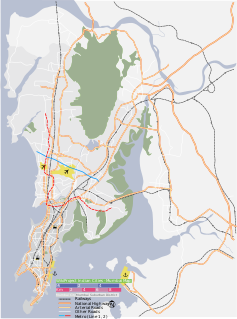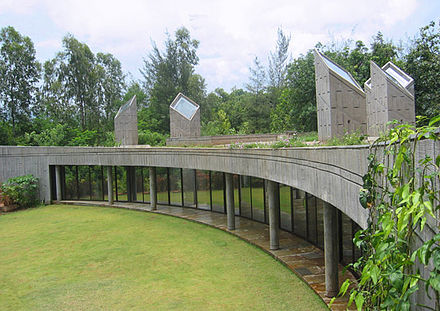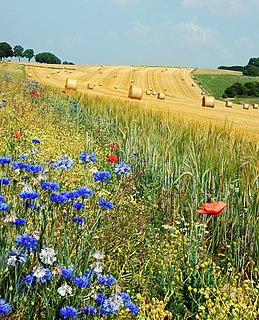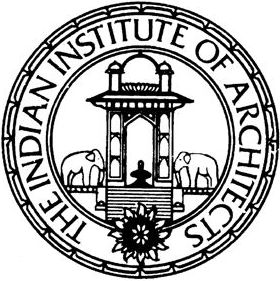
The United Nations Environment Programme (UNEP) is a programme of the United Nations that coordinates the organization's environmental activities and assists developing countries in implementing environmentally sound policies and practices. It was founded by Maurice Strong, its first director, as a result of the United Nations Conference on the Human Environment in June 1972 and has overall responsibility for environmental problems among United Nations agencies; however, international talks on specialized issues, such as addressing climate change or combating desertification, are overseen by other UN organizations, like the Bonn-based Secretariat of the United Nations Framework Convention on Climate Change and the United Nations Convention to Combat Desertification. UNEP's activities cover a wide range of issues regarding the atmosphere, marine and terrestrial ecosystems, environmental governance and green economy. It has played a significant role in developing international environmental conventions, promoting environmental science and information and illustrating the way those can be implemented in conjunction with policy, working on the development and implementation of policy with national governments, regional institutions in conjunction with environmental non-governmental organizations (NGOs). UNEP has also been active in funding and implementing environment related development projects.

Eastern Connecticut State University is a public liberal arts university in Willimantic, Connecticut. Founded in 1889, it is the second-oldest campus in the Connecticut State University System and third-oldest public university in the state. Eastern is located on Windham Street in Willimantic, Connecticut, on 182 acres (0.74 km2) 30 minutes from Hartford, lying midway between New York City and Boston. Although the majority of courses are held on the main campus, select classes take place at Manchester Community College, Capital Community College, and a satellite center in Groton.

Savitribai Phule Pune University, formerly University of Pune and University of Poona, is a collegiate public state university in Pune in the Indian state of Maharashtra. Established in 1949, and spread over a 411 acres (1.66 km2) campus, the university is home to 43 academic departments. The university is named after Savitribai Phule, a 19th-century Indian social reformer who is known for her contribution towards empowerment and emancipation of women through education. The university has affiliated colleges, departments, and research institutes, which are primarily in Pune.

Banaras Hindu University, formerly Central Hindu College, is a public central university located in Varanasi, Uttar Pradesh. It was established in 1916 by Madan Mohan Malaviya and Annie Besant. With over 30,000 students residing in campus, it claims the title of largest residential university in Asia.

The Indian Institute of Advanced Study (IIAS) is a research institute based in Shimla, India. It was set up by the Ministry of Education, Government of India in 1964 and it started functioning from 20 October 1965.

Environmental education (EE) refers to organized efforts to teach how natural environments function, and particularly, how human beings can manage behavior and ecosystems to live sustainably. It is a multi-disciplinary field integrating disciplines such as biology, chemistry, physics, ecology, earth science, atmospheric science, mathematics, and geography. The United Nations Educational, Scientific and Cultural Organisation (UNESCO) states that EE is vital in imparting an inherent respect for nature amongst society and in enhancing public environmental awareness. UNESCO emphasises the role of EE in safeguarding future global developments of societal quality of life (QOL), through the protection of the environment, eradication of poverty, minimization of inequalities and insurance of sustainable development. The term often implies education within the school system, from primary to post-secondary. However, it sometimes includes all efforts to educate the public and other audiences, including print materials, websites, media campaigns, etc.. There are also ways that environmental education is taught outside the traditional classroom. Aquariums, zoos, parks, and nature centers all have ways of teaching the public about the environment.

Camp Orkila is on the northwest shoulder of Orcas Island in the San Juan Islands of Washington. It has been in operation since 1906.

Aurora University is a private university in Aurora, Illinois. In addition to its main campus and the Orchard Center in Aurora, Illinois, AU offers programs online, at its George Williams College campus in Williams Bay, Wisconsin, and at the Woodstock Center in downtown Woodstock, Illinois. Approximately 5,500 students are enrolled in bachelor's, master's, and doctoral degree programs at Aurora University.
Hazon's Isabella Freedman Jewish Retreat Center sits on 400 acres of forest and meadows in the foothills of the southern Berkshires. Today, Isabella Freedman hosts organizational retreats, Hazon-run Jewish spiritual and environmental retreats, and private Jewish celebrations such as Jewish weddings and B'nai Mitzvah. Over 30 Jewish organizations spanning the denominational spectrum hold retreats at the Isabella Freedman Jewish Retreat Center, in addition to secular organizations. Isabella Freedman also hosts families across Jewish denominations for their popular Jewish holiday vacation programs, such as their yearly Passover, Shavuot, and "Sukkahfest" (Sukkot) retreats.

The Samundra Institute of Maritime Studies is one of India's advanced centres of marine engineering and navigation.

YMCA Camp Fitch is a year-round camp in North Springfield, Pennsylvania, owned and operated by the YMCA of Youngstown, Ohio. Prior to 1914, all summer camps operated by the YMCA of Youngstown were experimental and temporary in nature. Since its founding in 1914, Camp Fitch has hosted campers every year to date. Originally a program of the YMCA's downtown branch, Camp Fitch now exists as a YMCA branch owned by the YMCA of Youngstown.

College of Military Engineering (CME) is a premier technical and tactical training institution of the Indian Army Corps of Engineers of the Indian Army, this includes Combat Engineers, Military Engineering Service, Border Roads Engineering Services (BRES) and Survey.
YMCA Camp Tecumseh Outdoor Center is located in Indiana near the towns of Brookston, Indiana and Delphi, Indiana on the Tippecanoe River. The closest large city to Camp Tecumseh is Lafayette, Indiana, which is just across the Wabash River from West Lafayette. Camp Tecumseh was established in 1924 when citizens of Delphi raised $3000 to purchase the land which lies on a bend on the Tippecanoe river. The camp is named after Tecumseh, a Shawnee chief. Camp Tecumseh is fully accredited by the American Camping Association and currently serves over 4,000 campers every summer from throughout the midwest USA and the world. Camp Tecumseh is also open throughout the year, providing an Outdoor Education service for schools and a facility for retreats and conferences of all kinds. The facility serves over 30,000 people per year. It is an independent YMCA branch and is operated independently of other metro YMCAs.

The Energy and Resources Institute (TERI) is a research institute in New Delhi that specializes in the fields of energy, environment and sustainable development. Established in 1974, it was formerly known as the Tata Energy Research Institute. As the scope of its activities widened, it was renamed The Energy and Resources Institute in 2003.

Katraj is suburb of Pune in the Indian state of Maharashtra, and within the jurisdiction of Pune Municipal Corporation. Katraj is famous for its Peshwa-era lake that supplied water to the city during that period. The village lies at the foot of the Katraj Ghat or mountain pass on the main National Highway 4 connecting Pune with places south of the city, such as Kolhapur and Bangalore. In recent decades area surrounding the lake and the village of Katraj became part the City of Pune. The former rural area is now surrounded by residential complexes. The lakeside hosts the Rajiv Gandhi Zoological Park. Bharti Vidyapeeth, a deemed university, has its main campus here. A large Jain temple was built here in late 20th century.

The Institute on the Environment, or IonE, is a multidisciplinary institute at the University of Minnesota that supports interdisciplinary research, develops leaders and builds cross-sector partnerships aimed at shaping solutions to challenges at the intersection of society and the environment. Its director is Jessica Hellmann.

The Indian Institute of Ecology and Environment (IIEE) is a Government of India sponsored, autonomous, non-profit making institution formed with a view to impart teaching and provide a sustained platform for research and consultancy in the areas of ecology and environment. The Institute is located at New Delhi, India.

The National Institute of Construction Management and Research is a non profit management institute and research centre in the field of construction engineering and management. The Institute has been recognized by the Department of Scientific and Industrial Research, Ministry of Science and Technology, Government of India as a Scientific and Industrial Research Organization (SIRO) and is headquartered at Walchand Centre, Tardeo, Mumbai, India. Main campus being at Pune, Maharashtra.
Arcot Ramachandran was an Indian scientist, anthropologist, author and a former Under-Secretary General of United Nations Centre for Human Settlements, known for his scholarship on the subjects of heat and mass transfer and environment and his social commitment to the cause of sustainable development. The Government of India honoured him in 2003, with the Padma Bhushan, the third highest civilian award, for his services to the fields of Science and Engineering.
























